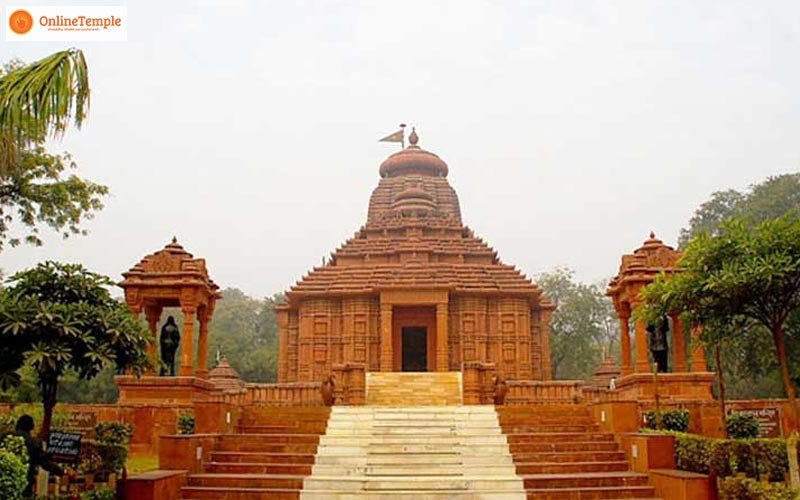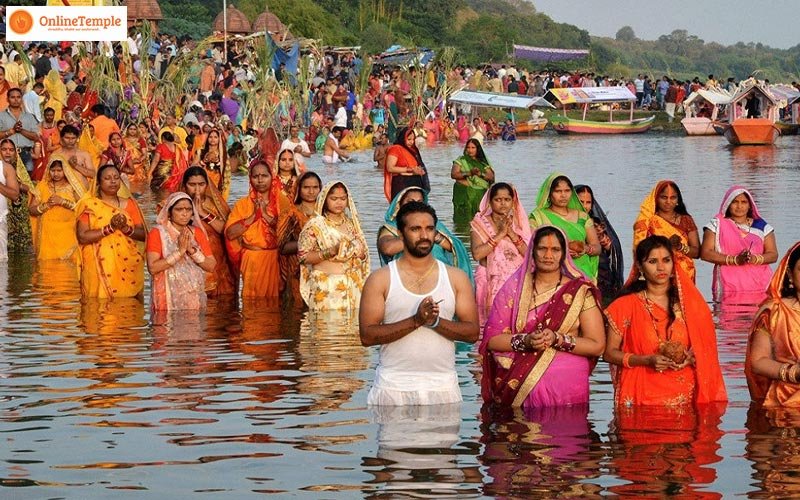People have long revered Chhath Puja as an ancient and sacred festival. The puja ritual is identical to the holy sacrifices made to the Sun God as described in the Rig Veda. Chhath Puja is a representation of growth, joy, and good fortune. People in Bihar, Jharkhand, Uttar Pradesh, and some other northeastern states like Madhya Pradesh, Uttarakhand, Chhattisgarh, Rajasthan, etc., hold a major event where they perform the pooja dedicated to Lord Sun and his wife Usha. The disciples pray to the pair during the celebration, asking for their blessings and thanking them for sustaining life on earth. Chhath Puja is reportedly performed to obtain the Sun’s blessings for a child, and platforms like Onlinetemple provide online puja for safe child birth.
The primary event, however, occurs on the third day of the four-day Chhath puja. During this period, followers honor the Sun and all that it gives to Earth each day. They revere both the rising and setting sun. The devotees believe that the puja cures any illness, elevates the family’s status, and to live a happy and successful life. It is a holiday where family members seek the blessing of the elderly to secure their well-being and prosperity. If people are not able to perform the puja themselves, then they opt for online puja booking services which are done with proper rituals to seek blessings from Lord Surya.
The following Important Dates for Chhath Puja in 2022:
This year, Chhath Puja 2022 begins on Friday, October 28, with Nahay Khay. On Sunday, October 30, the devotees will worship the setting sun as part of the festival of Kharna, and on Monday, October 31, they will worship the rising sun. Many Hindus from abroad book puja for good health online in order to gain the benefits of the rituals being performed while being away from India.
Chhath Puja’s history

The Hindu sacred book, the Rig Veda, mentions Chhath Puja and also lists all the identical ceremonies carried out during the puja. In the past, sages (rishis) worshipped the sun god to receive energy from him and to give thanks to him for the correct conservation of the planet.
Although the precise beginning of Chhath Puja is unknown and still unclear, people claim that it dates back to the time of the Ramayana and Mahabharata.
Hindu mythology states that after returning to Ayodhya after a 14-year exile, Lord Rama and Maa Sita held a fast and prayed to the Sun after dawn in the month of Kartika during Shukla Paksha.
According to the Mahabharata, Karna, one of the five Pandavas, is the progeny of the Sun God and Devi Kunti. It is said that Karna distributed prasad to the needy while standing in the river and offered daily prayers to Lord Sun. Another tale describes how the Pandavas and Draupadi performed a similar puja to recover their lost kingdom.
Scientific Significance of Chhath Puja

Chhath Puja, according to many, isn’t just a Hindu ceremony; it also has scientific foundations and aids in metabolic stimulation and body detoxification.
Scientifically, swimming outside in the sun has been proven to raise the body’s bio-electricity flow, enhancing its general functionality. Others think that this puja helps to cleanse the body of dangerous viruses and bacteria and gets it ready for the winter.
How do you celebrate Chhath Puja?

After four days of Diwali, a four-day festival of Chhath Puja starts. The purpose of Chhath Puja is to honor the sun which is considered a life-giver and mothers lead the puja and festivities for this reason. This is how devoted followers observe it each year:
Nahaye Khaye – On the first day of the puja, devotees start their day by bathing in one of the neighboring rivers, preferably the Kosi, Ganga, or Karnali, though any river is acceptable. People consider these rivers heavenly and take this holy water home to perform rituals.
Kharna Puja / Lohanda- On the second day, devotees take a bath early in the morning. They observe a complete day of fasting, which finishes shortly after dusk. Offerings for family members, such as Kheer, rice, and bananas, are provided following the worship of the Lord Sun and Moon.
Following these offerings, they observe a 36-hour fast without food or water.
After observing a 36-hour fast, devotees offer evening prayers to Lord Aun and Chhathi Maiya by bathing in holy water and presenting food (Prasad). The worshippers sing folk tunes while praying to god for their child’s safety and health.
The third day of Chhath Puja is crucial, as worshippers offer early morning prayers to the Sun. People often book online puja for safe childbirth, and it is performed on this day.
Usha Arghya (Early Morning Offerings)- On the fourth day, devotees get up early and travel to the holy rivers to perform the morning rituals. They take a swim, give thanks to God for everything, and express regret for any mistakes. Devotees break their fast by consuming the prasad and food.
Expecting mothers can book online puja for safe childbirth during this period, as they receive advice not to observe fasts. They can avail the benefits of the rituals for their child with just one booking.
People who follow this period live pure, responsible lives and are full of good energy and passion. It’s quite satisfying to complete the ceremonies and pay respect to one of nature’s most potent forces.

